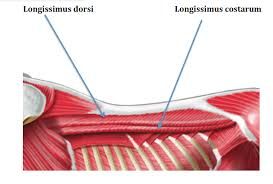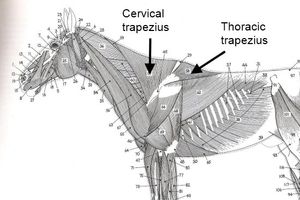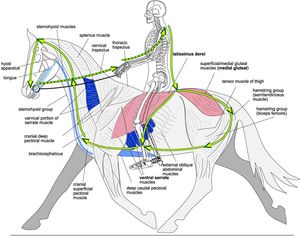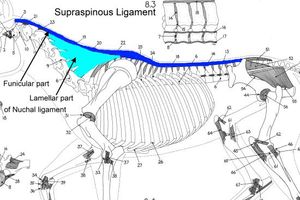| From the desk of Terry Peiper at Fit Right Saddle Solutions January 2018 Yes, that is snow out the window which is exactly why I am here at my desk. Snow is special around here because it doesn’t happen very much. The farm in Carlisle is still for sale so please continue to share that information. I love living in Tennessee but it will be better when Larry is here full time with me. Our barn is scheduled to start in March. I am pretty excited about that. And I scheduled the first Fit Right Saddle Class here on March 24, 2018. This one will be one day mostly inside but a couple hours will be spent outside with the horses and saddles. If you or anyone you know wants to gain more knowledge about how a saddle is suppose to fit and why, sign up! There will be no sales pitches or discussion of the products I sell, this is strictly an interactive educational presentation. As I was walking the horses out the lane this morning, I noticed the prints in the snow on the lane when I was going back for the others. There were my prints and my faithful velcro dog. There were Nic’s prints all in line and regular. Then there were Annie’s prints. She walks like a drunk. She goes this way, then she goes that way, then she tracks up real nice, then she doesn’t. If we were riding her during a saddle fitting I would note on the dynamic saddle fit evaluation that her rhythm was irregular. I was walking 2 horses at a time on long leads with snow blowing in our faces so in my mind she is excused for being irregular. Although, I am thinking to myself, “Nicholas didn’t have any trouble with it.” Anyway of course, I want to focus on the irregular rhythm and how it can easily be caused by a poor fitting saddle. Part of the saddle fit evaluation is to watch your horse being ridden with his saddle. We want to see what your saddle does while you are riding. Is it slipping forward or back, left or right, bridging, rubbing hairs or causing pressure points? We are also looking at how the horse moves, whether or not he engages, tracks ups, bends easily, hollows his back, drags his toes, is off or lame, how he carries his head and tail, whether he is calm and relaxed or tense and anxious and is his rhythm regular to the left and to the right. When I write "irregular rhythm" on an evaluation, it means the horse's footfall was uneven or not consistent, An example of irregular rhythm would be a horse was slipping back and forth between gaiting and trotting. Another example would be a horse that was asked to jog but was breaking into the walk frequently or was round and tracking up for part of the circle but part of the circle they were hollow and out behind. Of course, there are a lot of things that can contribute to your horse’s behavior and performance. We could have training/rider issues, feet problems, nutrition, chiropractic and the list goes on and on. I know that. But if you are riding your horse for a very short time and he shows any of the signs of poor fitting saddle and those issues go away when all you did is change the saddle, it is hard to argue with that. Actually it is impossible to argue with that. And I have a filing cabinet full of evaluations proving it. Horses don’t lie, they just react. Muscles work in pairs or chains to move bones. Tendons connect the muscles to the bones. Ligaments connect the bones to the joints and bones. I know very simplified but I want to emphasize here how the saddle can affect the way the horse moves. Before we can expect our horses to move or perform a certain way, we need to understand that some of their behavior is out of their control. It might be that we need to learn to be a better rider, use a different bit, not feed so much sugar or it may be that a horse is experiencing an involuntary reflex or chain reaction caused by the saddle. Longissimus Muscle
The longissimus muscle is the big long muscle that we set the saddle on, it connects the neck to the sacrum. The purpose of the longissimus muscle is movement not carrying weight. A tight longissimus muscle can cause the horse to be spooky, have a hollow back, have too round a back, have trouble gaiting, lack forward motion and an irregular rhythm. Trapezius Muscle
The highest thoracic vertebrae are known as the withers. Over the top and sides of the withers is the trapezius muscle. The trapezius muscle moves the scapula. The trapezius can atrophy or change shape from riding in a saddle that pinches and cuts off blood circulation resulting in large shoulder holes, white hairs and/or a hollow dip on top of the neck in front of the withers. If you are having trouble getting your horse to round his back, engage his hindquarters or stretch forward, it may be because your saddle is pinching at the withers. A saddle that is pinching at the withers can also cause a horse to have trouble bending and irregular rhythm. Latissimus Muscle
The latissimus muscle (shown in pink under the rider’s leg) flexes the shoulder and pulls the front leg back. An area of pressure on the latissimus or a poor fitting girth can cause a shortened stride and an irregular rhythm.
Supraspinous Ligament
The nuchal ligament goes from the poll to the withers where it meets the supraspinous ligament which goes from the withers to the sacrum right down the channel or gullet of the saddle. This ligament system basically connects all the vertebrae together and acts as a suspension bridge for the skeleton. It is what allows the horse to be round. If the saddle does not allow room for the ligament, it will cause the back to drop, a shortened stride in the hind end and again irregular rhythm. When the horse can lift his back, the front end and the back end move in time or in sync. It is beautiful to watch a horse moving correctly. They are happy. But, when the back is hollowed away from pressure, the front end moves and the back end moves but they are not in sync. The angles of the front legs don’t match the angles of the back legs. They look disjointed, high headed, tense, heavy on the forehand and usually it is easy to tell the horse is just not happy.Note just because the head and neck are tucked does not mean the back is round. So irregular rhythm can actually be a sign that something very serious is brewing. To prevent long term permanent damage please have your saddle fit checked regularly or learn to do it yourself. Please help me share the word about saddle fit and how it affects our horse's behavior, performance and ultimately the health of horse and rider. If I help just one horse today, I will be happy. But if each one of us helps one horse, that would be fantastic! TTYS & God Bless, Terry Peiper "Spreading the word about how proper saddle fit affects our horse's behavior, performance and ultimately the health of horse and rider." (717) 609-2822 470 Copperhead Lane Crossville TN 38571 Located 7 miles north of I-40 on Rt. 127
|





